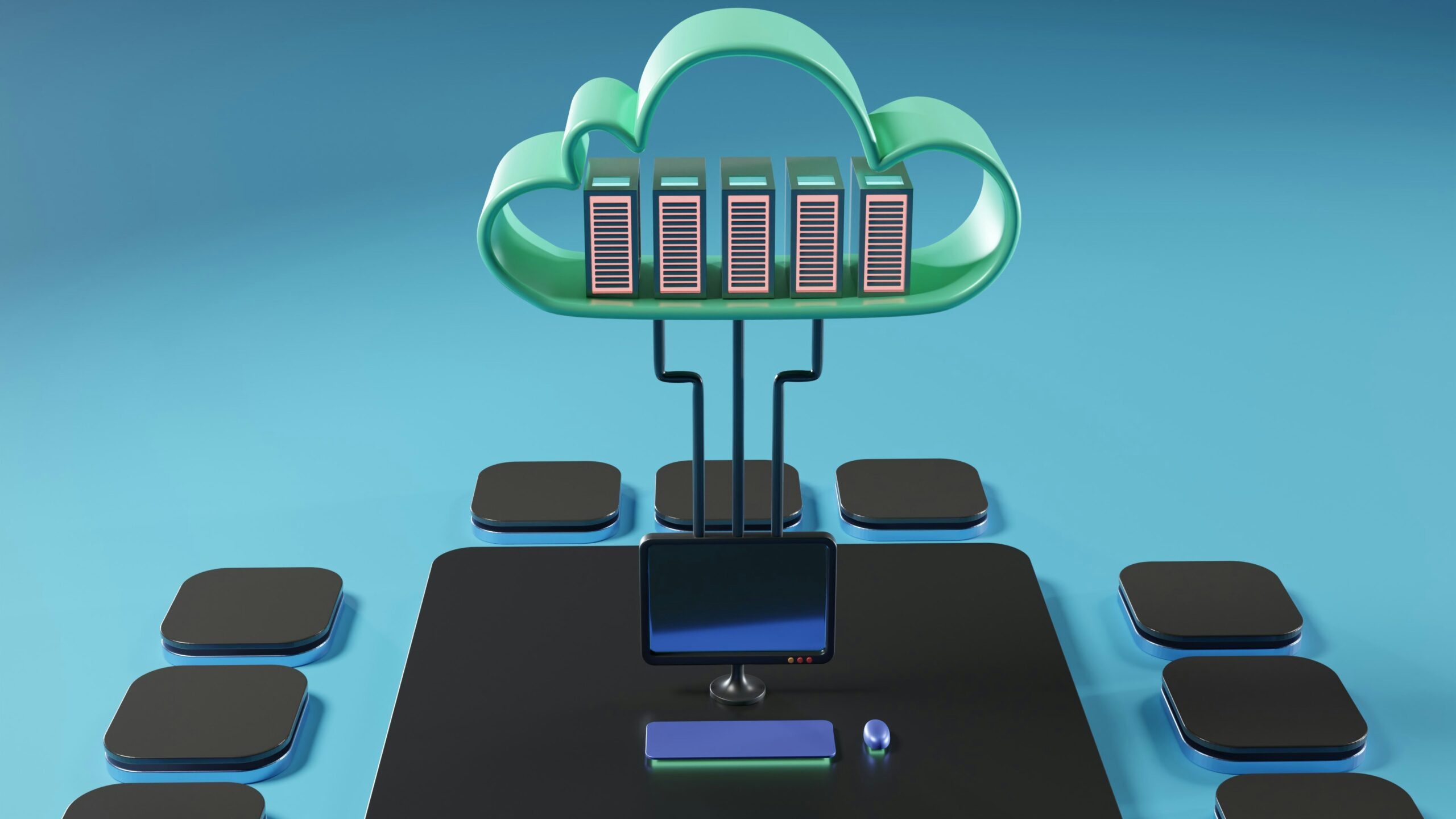
Securing the Stack: Why Cloud Native is the Future of eCommerce Defense
Securing the Stack: Why Cloud Native is the Future of eCommerce Defense
It’s no secret that digital risk has surpassed market risk for many businesses. For small and medium enterprises (SMEs) and ambitious eCommerce managers, the complexity of modern infrastructure often feels like balancing a stack of precarious dominoes. You need blisteringly fast website speed to meet consumer demands, but every layer you add—from the caching engine to the database—introduces a new vulnerability point.
The traditional approach to web security, rooted in monolithic servers and manual patching schedules, is failing. In the age of sophisticated ransomware, automated attacks, and the relentless pursuit of zero-day exploits, simply layering on firewalls and antivirus software is akin to building a wooden fence around a fortress. We need a fundamental shift. We need to embrace the principles of **Cloud Native Security**—a paradigm that views security not as an add-on, but as an intrinsic, non-negotiable property of the application stack itself.
As someone who has spent years tracking infrastructure trends and advising organizations on risk mitigation, I can tell you that the future of resilient and high-performing infrastructure lies in simplified, standardized, and automated stacks. This article will delve into how cloud-native principles, derived from the world of hyperscale platforms, are now being packaged and delivered to benefit SMEs and digital agencies, ensuring your **eCommerce infrastructure** is not just fast, but inherently secure.
The Fragility of Legacy Infrastructure: Configuration Drift and Human Error
Think about a typical legacy setup. You have dedicated virtual machines (VMs) running for months or years. Over time, administrators patch things manually, install new tools, tweak configuration files, and troubleshoot specific issues. This leads to what we call configuration drift. No two servers are ever truly identical, making security audits difficult, rollback painful, and vulnerability management a constant, exhausting game of whack-a-mole.
Moreover, the speed of response to new threats is hampered. When a critical vulnerability (like Log4Shell) drops, the speed at which you can patch hundreds of unique VMs is the difference between an inconvenience and a catastrophic data breach. This is simply not sustainable for competitive, fast-moving businesses.
The Cloud Native Mandate: Security as Code (DevSecOps)
Cloud Native demands a change in mindset: if security isn’t automated, it doesn’t scale, and it likely isn’t reliable. Security is shifted 'left'—meaning it is integrated at the development and deployment phase, not bolted on at the end. This is the core of DevSecOps, and it relies heavily on containerization and immutability.
Pillars of Resilience: Isolation and Immutability
The most transformative benefit of cloud-native architecture is the inherent isolation and immutability provided by container technology, adhering to CNCF standards.
Isolation: Microservices and Reduced Attack Surface
Containers (like Docker) allow you to run microservices—small, isolated components that perform specific functions. If an attacker breaches the authentication service, they haven't automatically breached the payment gateway or the inventory management system. Each service is isolated, reducing the attack surface area of the overall application.
For an eCommerce site, this isolation is critical. Imagine separating your public-facing CMS, your payment API endpoints, and your database into distinct, secured execution environments. This segmentation significantly slows down lateral movement by potential intruders.
Immutability: Treating Servers Like Cattle, Not Pets
Immutability is the concept that once a container image is built, it is never changed. If a patch is needed or a configuration update is required, you don't log in and run an update command. Instead, you build a *new*, patched container image, deploy the new image, and destroy the old one. This ensures:
- **Consistency:** Every deployment is identical.
- **Reliability:** Rollbacks are instant—just redeploy the previous known-good image.
- **Security:** If a container is compromised, the attacker’s changes are instantly erased the next time the container is restarted or replaced.
This immutable infrastructure is the gold standard for high availability and top-tier security. However, implementing this level of infrastructure, typically via orchestrators like Kubernetes, has historically required a specialized DevOps team and deep expertise—a massive barrier for SMEs.
Bridging the Gap: Kubernetes-Grade Simplicity for the Business Audience
This is where specialized platforms like **STAAS.IO** enter the conversation. The power of cloud-native orchestration—isolation, immutability, and instant scaling—doesn't have to come with the burden of managing Kubernetes clusters or infrastructure as code pipelines.
STAAS.IO abstracts away the operational complexity, offering a platform where you can build, deploy, and manage your applications with Kubernetes-like simplicity. By adhering to core CNCF containerization standards, businesses get the resilience and security benefits of high-grade container orchestration—like automated rollbacks and segmented environments—without needing to hire dedicated SREs. It's the secure foundation modernized web hosting and eCommerce scalability demands, delivered simply.
Defending the Data Plane: Persistent Storage Security
While containers thrive on ephemerality (being easily disposable), most real-world applications, especially databases, logging systems, and content repositories, require persistence. Data must survive restarts and replacements.
Securing persistent storage in a dynamic, cloud-native environment is notoriously challenging. If volumes are not handled securely, attackers can exploit misconfigurations to access sensitive customer data, even if the application containers themselves are protected.
The solution lies in infrastructure that provides robust, native management of these volumes. For platform users, this means demanding transparency and reliability in how data is stored and encrypted at rest.
A key differentiator for robust cloud platforms is the provision of full native persistent storage and volumes. This isn't just about ensuring data sticks around; it's about guaranteeing that those volumes are securely mounted, isolated between stacks, and protected according to best practices, regardless of how frequently the application containers scale up or down.
Performance and Protection: The Symbiotic Relationship
In modern digital commerce, security is inextricably linked to performance. A slow site isn't just bad for conversion; it's often a sign of underlying infrastructure fragility or inefficiency that can be exploited.
Core Web Vitals as a Security Proxy
Search engines now enforce high standards for user experience through metrics like Core Web Vitals. While we typically think of these in terms of UX and SEO, they are also a good proxy for infrastructure health. Infrastructure that is poorly optimized, experiences frequent resource bottlenecks, or suffers from high latency is less resilient to traffic spikes and denial-of-service (DoS) attacks.
Cloud-native architecture inherently addresses this by enforcing efficiency:
- Efficient Resource Utilization: Containers use significantly less overhead than traditional VMs, freeing up resources to handle legitimate traffic faster.
- Instant Scalability: The ability to scale horizontally (adding more containers) or vertically (giving existing containers more power) instantly mitigates potential resource exhaustion attacks, making your site naturally resistant to many forms of DoS.
When you choose a system built for speed and efficiency, you are simultaneously choosing a system built for resilience. This is why investing in managed cloud hosting built on these modern principles is a crucial strategic step, not just a technical upgrade.
Secure Continuous Delivery: The CI/CD Pipeline as the Security Gateway
If the application stack is immutable, the mechanism that builds and deploys that stack—the Continuous Integration/Continuous Deployment (CI/CD) pipeline—becomes the single most critical point for security control.
In traditional hosting, you might upload files via SFTP or manually run deployment scripts. This opens up numerous windows for human error, insertion of malicious code, and environment mismatch.
In a cloud-native model, every change must flow through the pipeline. Security steps are baked in:
- Code Scanning: Automated tools check for vulnerabilities in the code (SAST/DAST).
- Image Scanning: Automated tools check for known vulnerabilities in container base images (libraries and dependencies).
- Policy Enforcement: The pipeline ensures that deployment only happens if security policies (e.g., strong secrets management, proper resource limits) are met.
For SMEs and agencies that value rapid iteration, adopting a platform that simplifies this process is non-negotiable. Look for solutions that offer robust, integrated CI/CD pipelines, or even one-click deployment options, where the security checks are handled automatically beneath the surface.
The Economic Argument: Predictable Costs and Vendor Freedom
Security and scalability often come with the worry of unpredictable costs. Traditional hosting models often surprise businesses when they hit a sudden peak traffic spike—the exact moment they need stability and elasticity most.
Cloud-native platforms designed for business users must offer predictable economics alongside technical superiority. A vital part of managing long-term risk is ensuring freedom from punitive scaling costs and vendor lock-in.
Choosing platforms built on open, standardized components (like the widely accepted CNCF standards) ensures that if your business needs shift, you have portability. This is the ultimate form of long-term risk mitigation: the freedom to move your successful stack without a massive, proprietary migration.
STAAS.IO: Scale Predictably, Securely
The complexity of scaling securely has traditionally been the biggest financial barrier. **STAAS.IO** was founded to eliminate this complexity, ensuring that the necessary infrastructure for security and performance is accessible and affordable.
Our pricing model is designed specifically for predictability. Whether your application needs to scale horizontally across multiple machines to handle a flash sale or vertically for increased resource power, the simple, transparent pricing structure keeps costs predictable as your application matures into a production-grade system. This removes the financial fear associated with embracing high-availability, high-security infrastructure.
The Final Verdict for SMEs: Why Managed Stacks are Essential
For the small business owner, the eCommerce manager, or the agency professional, the takeaway is clear: you need the resilience and speed of cloud-native architecture, but you cannot afford the complexity of building and maintaining it yourself. Trying to manage sophisticated technologies like Kubernetes and container networking while simultaneously focusing on your core business is a recipe for security vulnerabilities and burnout.
The strategic choice is to rely on managed cloud hosting platforms that have already baked in cloud-native security principles:
- Platforms that guarantee application isolation.
- Platforms that simplify CI/CD to secure the deployment pipeline.
- Platforms that provide resilient, secure cybersecurity for SMEs by leveraging automatic scaling and immutability.
- Platforms that offer true eCommerce scalability without introducing opaque or vendor-locked components.
By delegating the stack complexity to experts, you gain a competitive advantage: infrastructure that is faster, more cost-effective, and, crucially, inherently more secure against the threats of the modern web. Securing your stack isn't about buying more tools; it’s about adopting a more intelligent, automated architecture.
Conclusion
The migration toward cloud-native principles is not merely a technological trend for the largest enterprises; it is the new standard for digital defense and performance across all business sizes. For modern eCommerce and digital operations, security, speed, and scaling are now inseparable qualities delivered by the underlying architecture.
SMEs deserve access to infrastructure that simplifies this complexity, providing the power of isolated, secure, and scalable stacks without the massive operational overhead. By choosing platforms that champion standards, immutability, and simplified persistent storage, businesses can finally move beyond the endless cycle of patching and focus on growth.
— Call to Action (CTA) —
Is your current hosting solution built for the security demands of tomorrow? Stop managing complexity and start focusing on growth. Explore how **STAAS.IO** simplifies Stacks As a Service, offering a quick, secure, and easily scalable cloud environment built on native containerization standards. Get Kubernetes-level resilience and performance for your eCommerce platform without the headaches. Build your next big product securely with STAAS.IO today.




